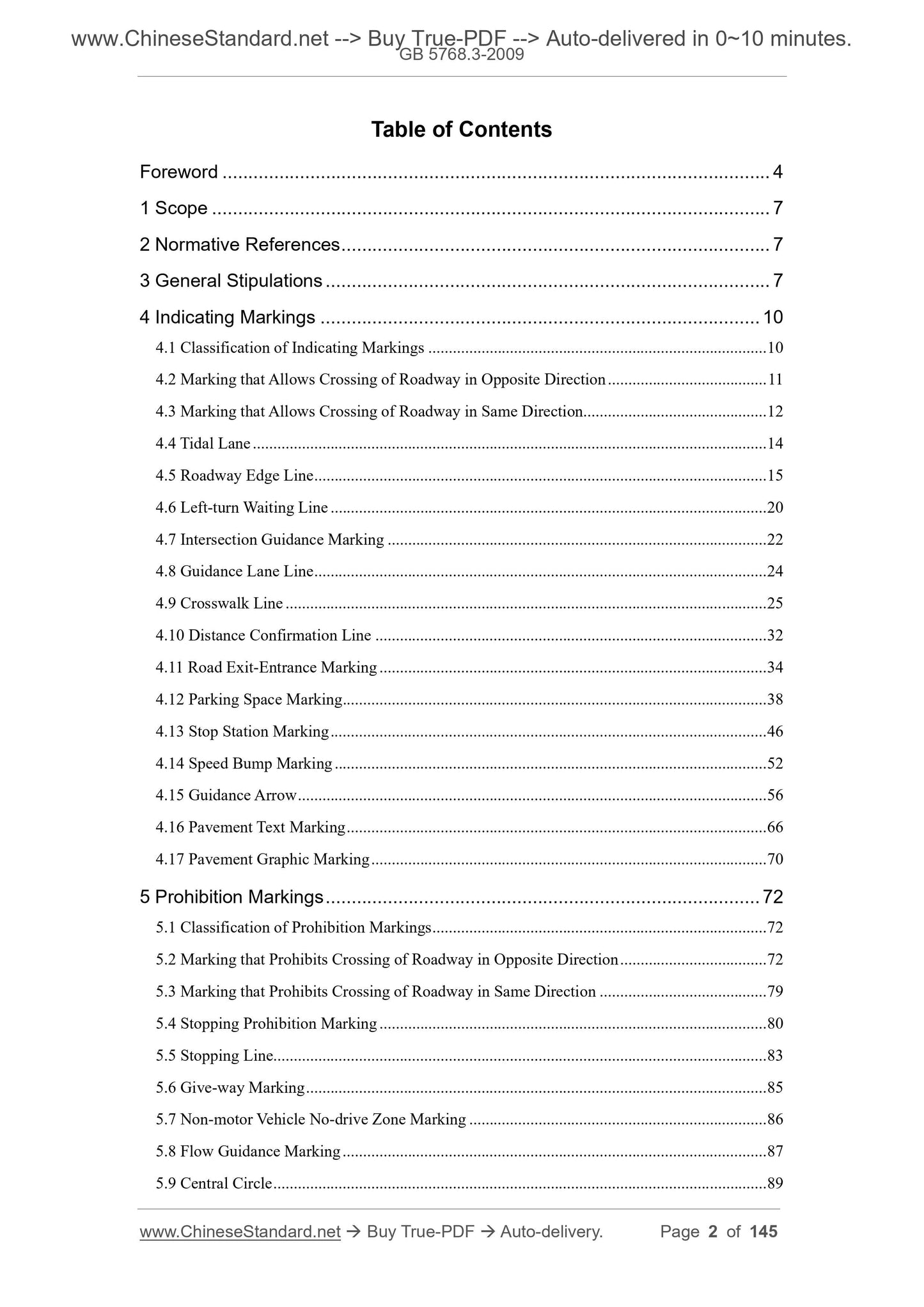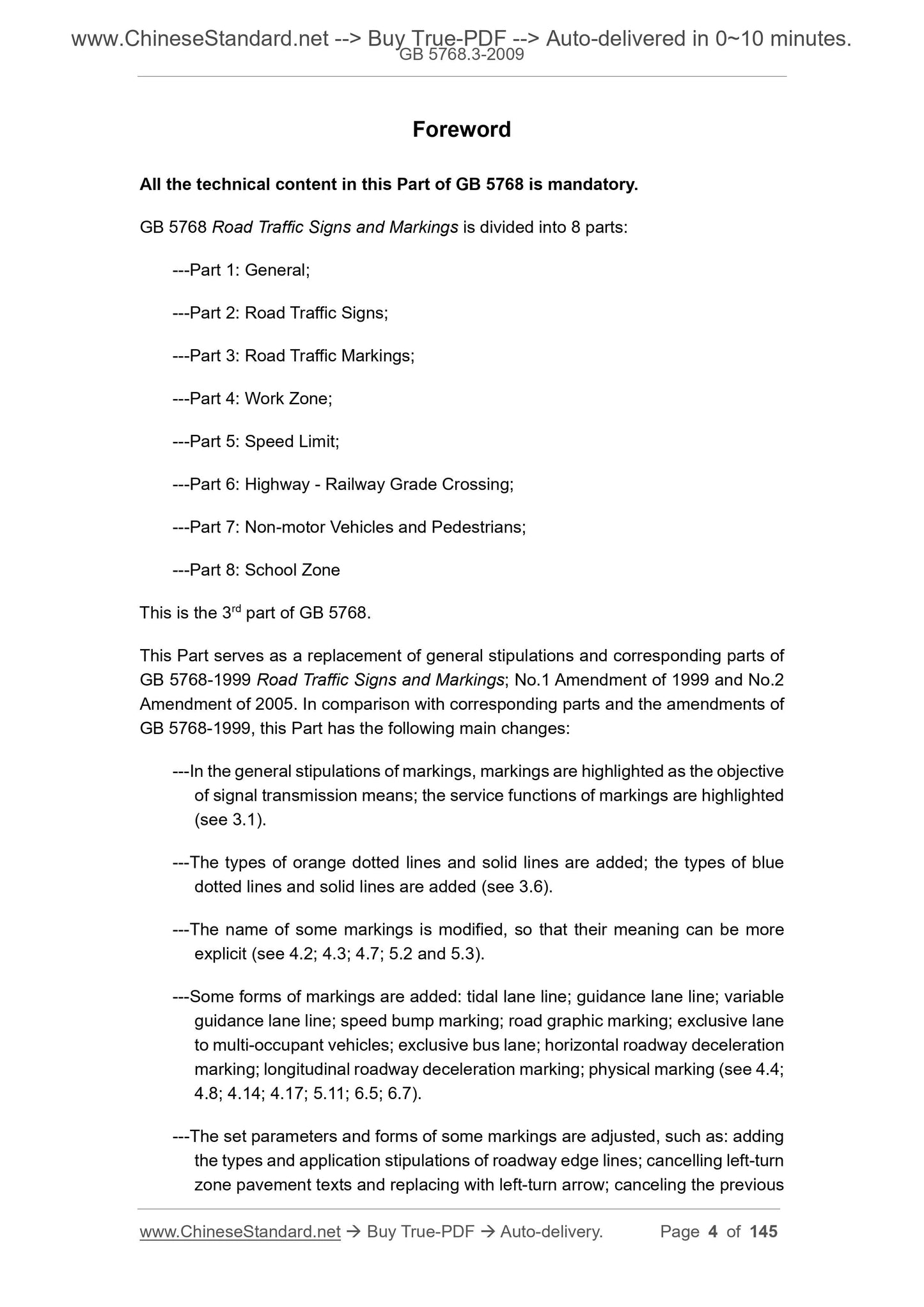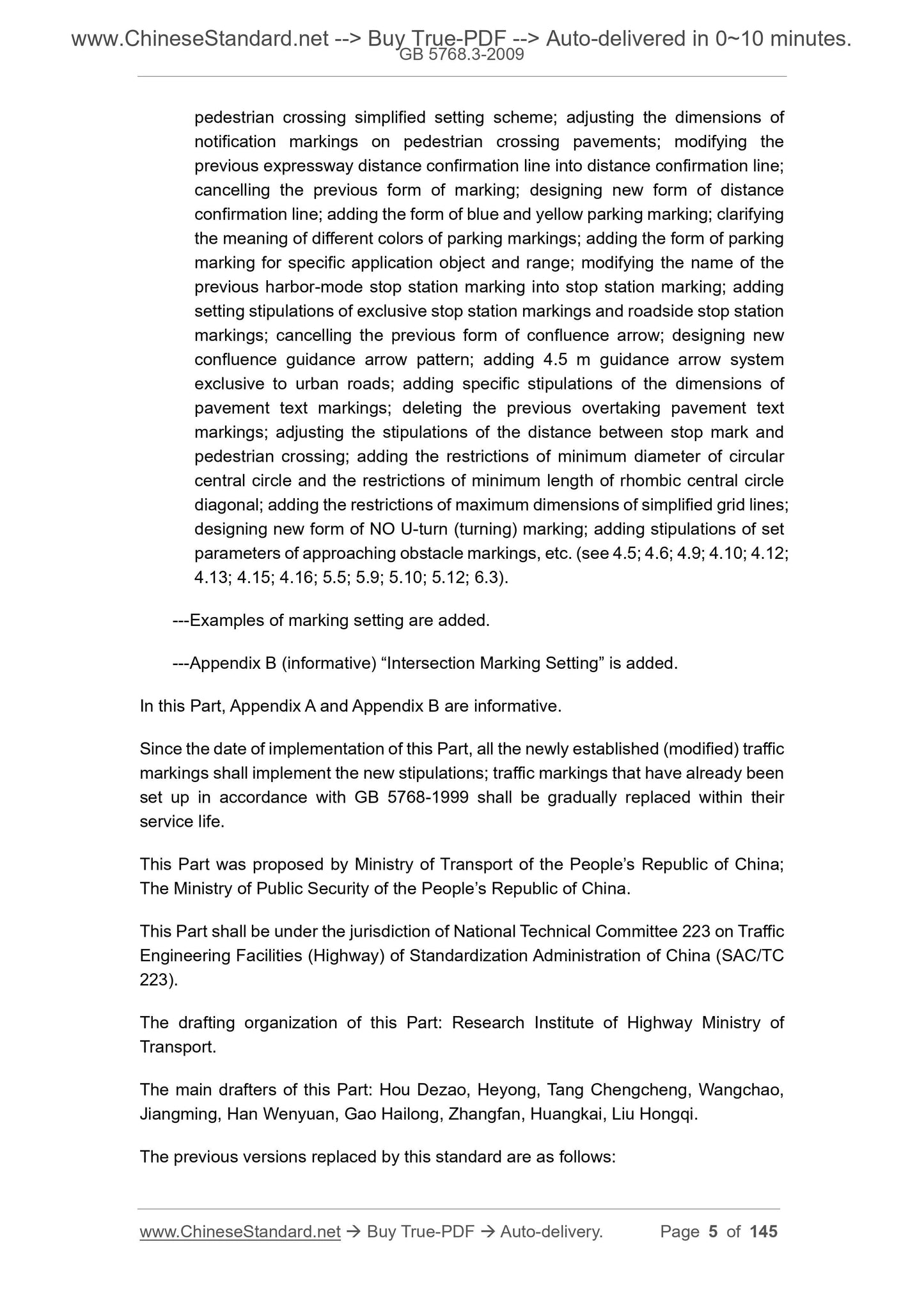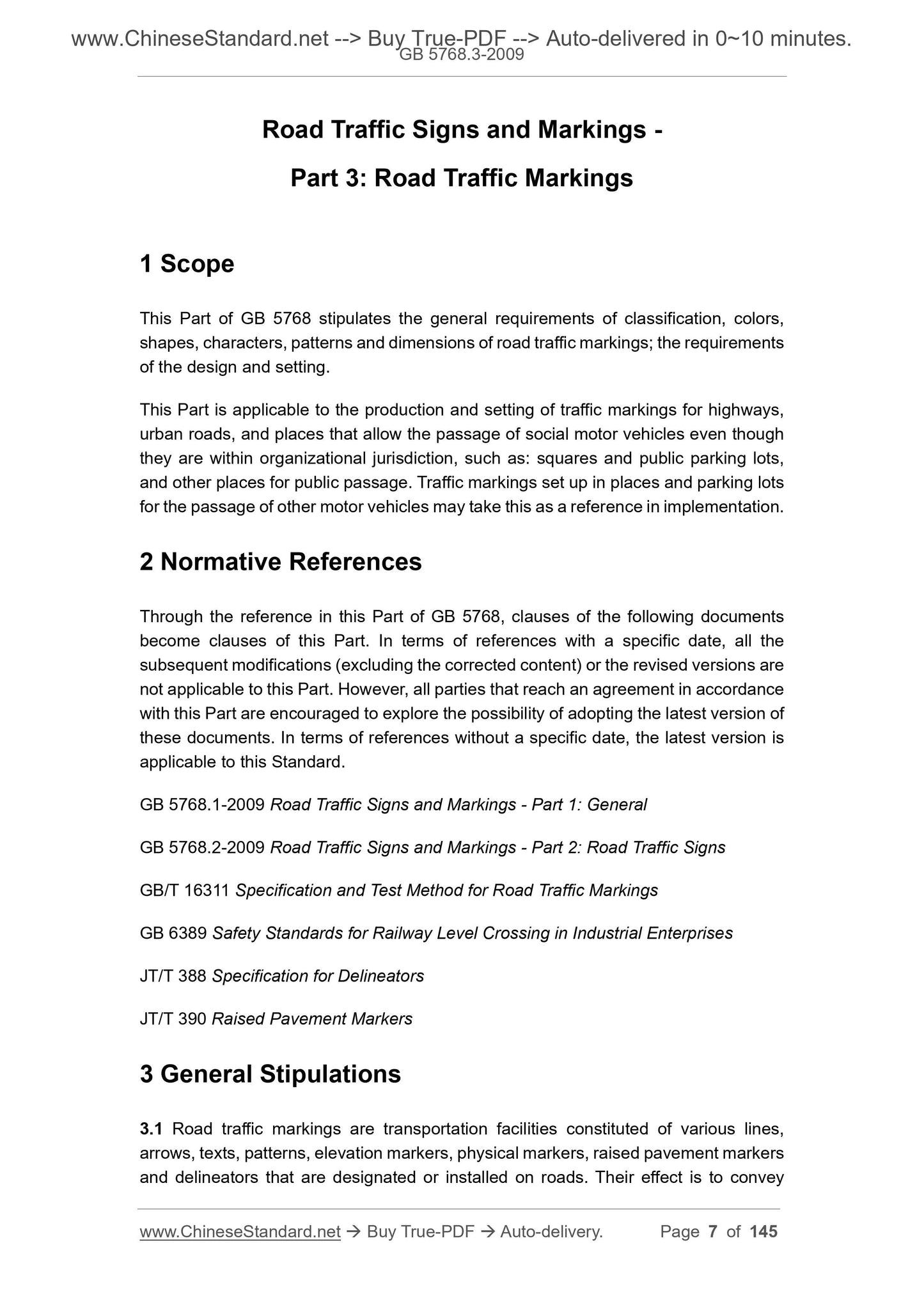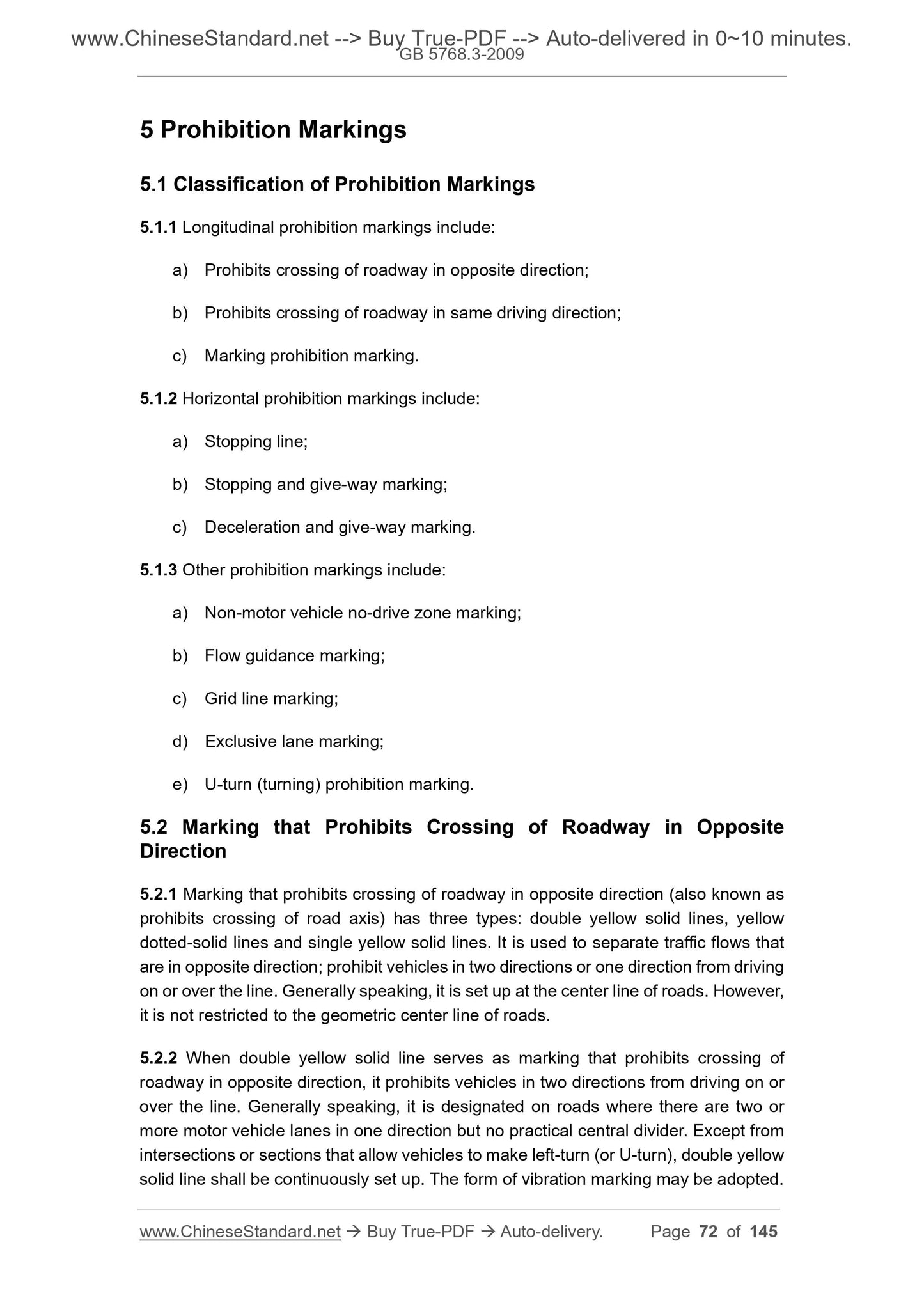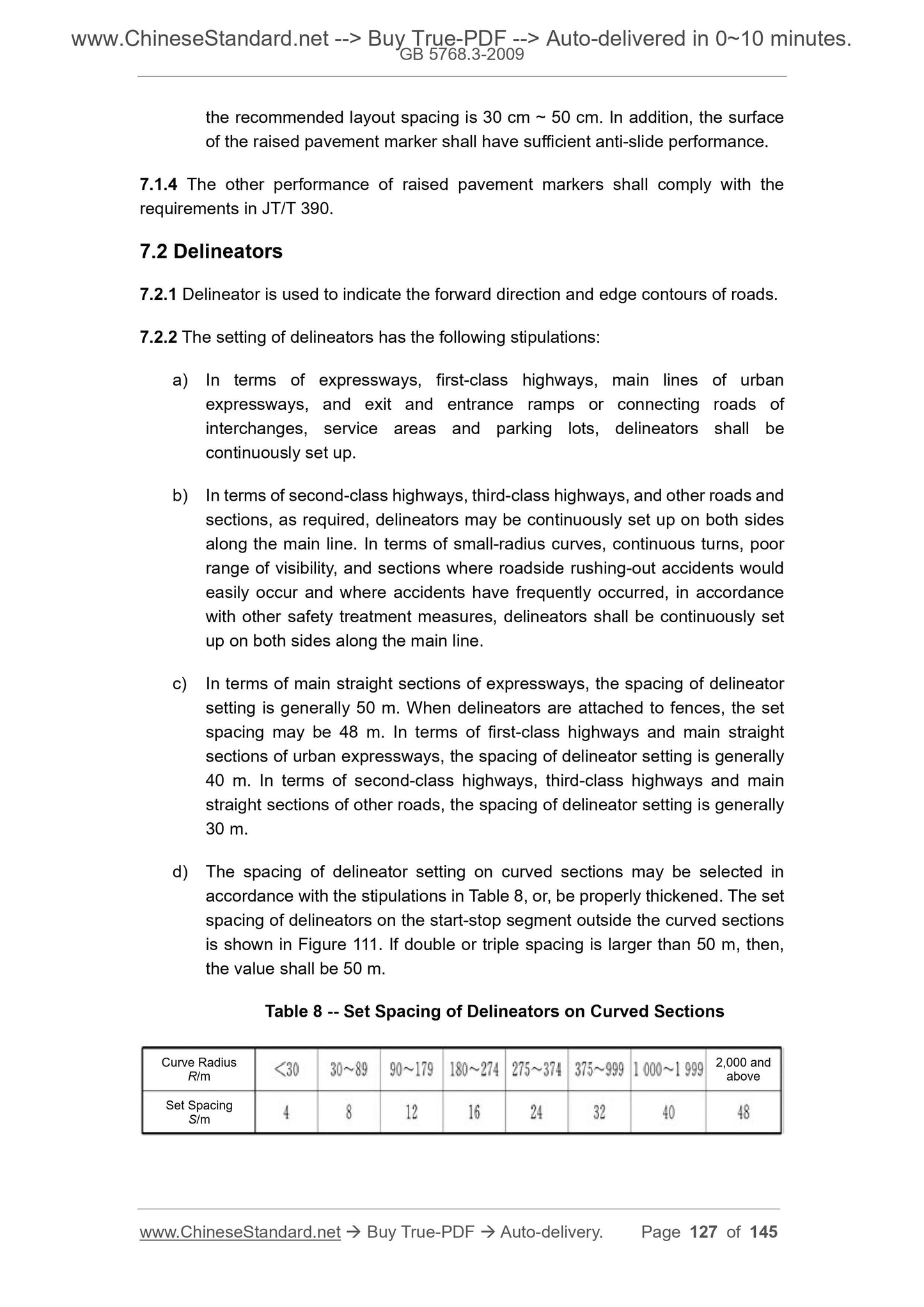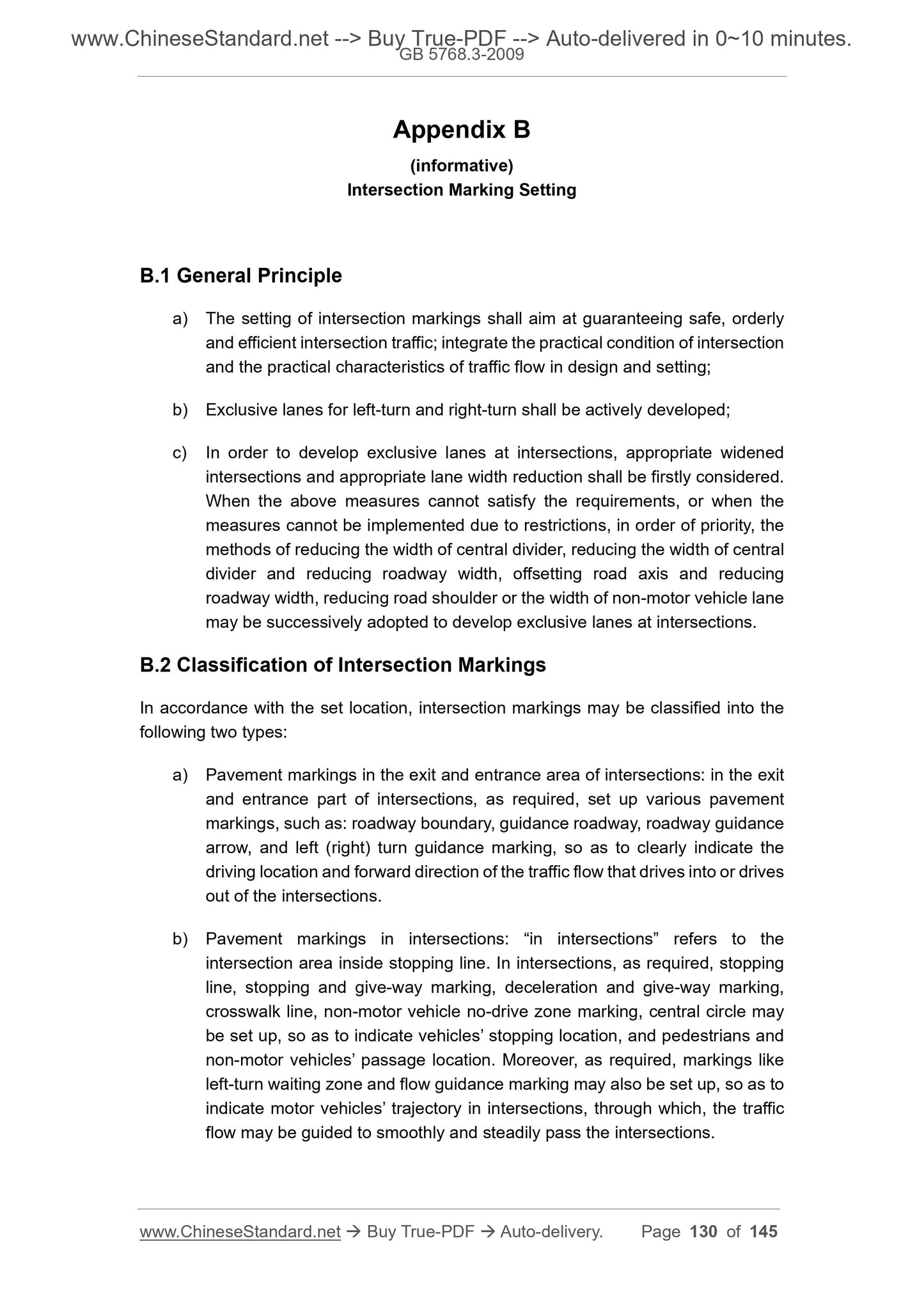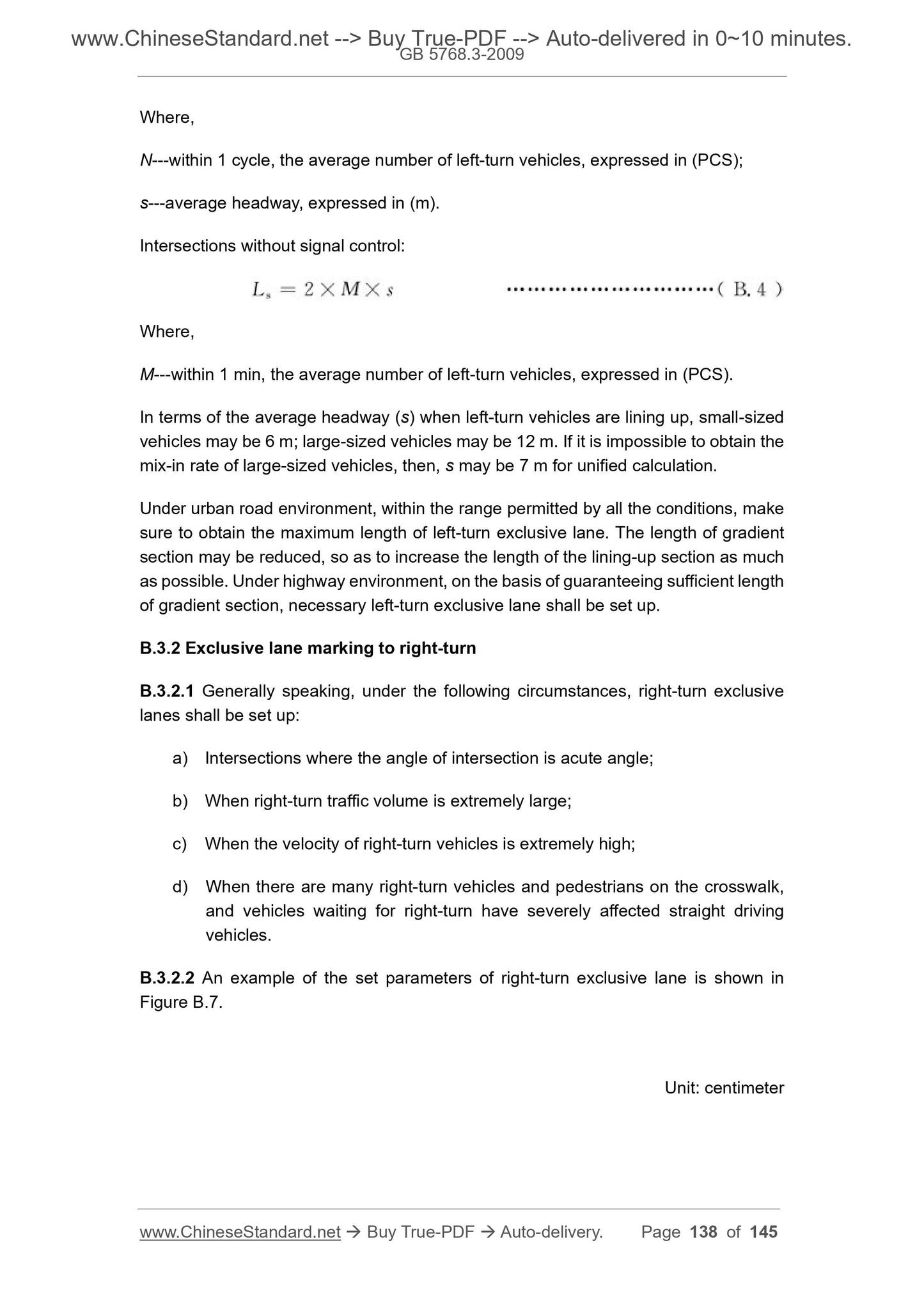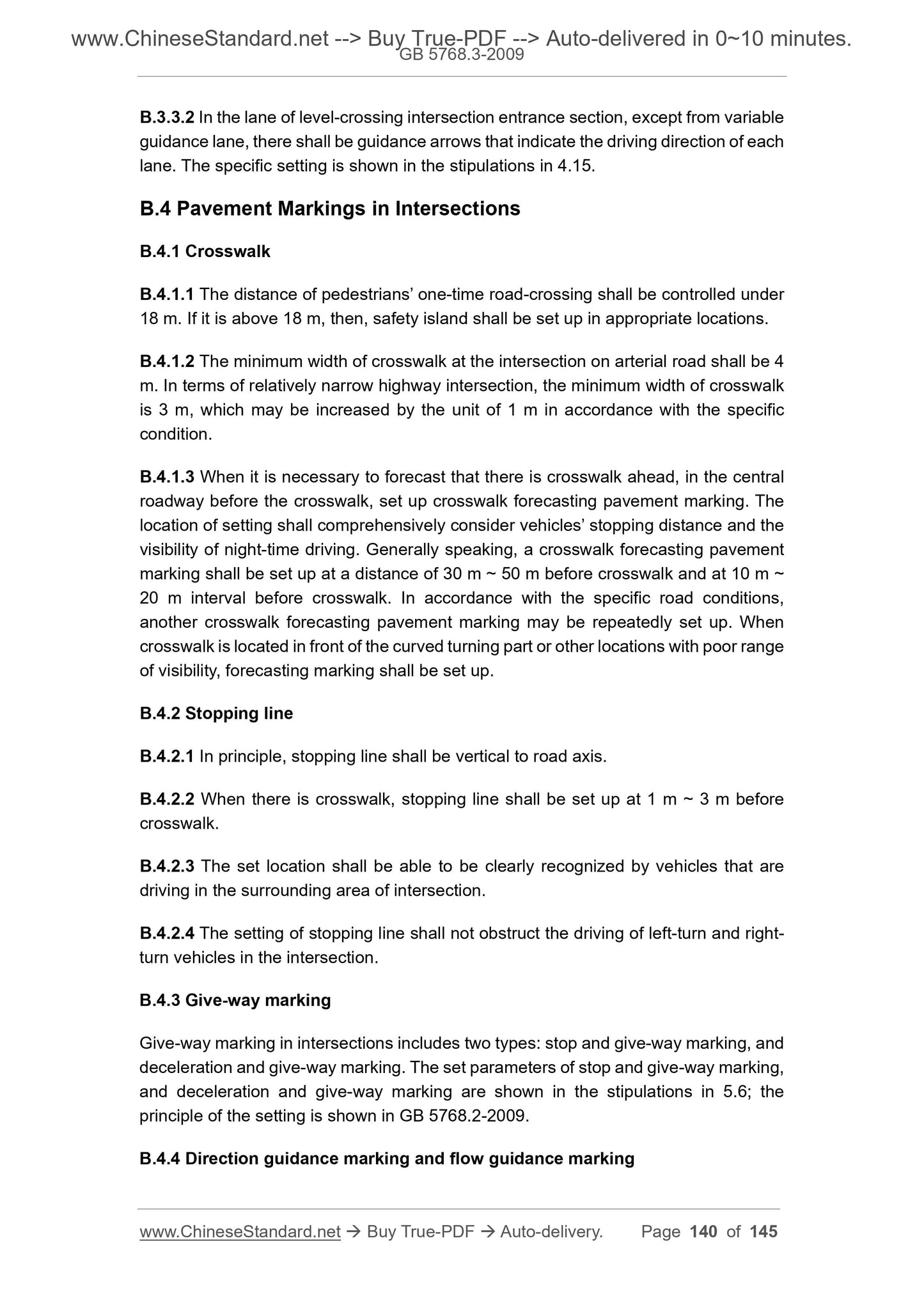1
/
of
9
www.ChineseStandard.us -- Field Test Asia Pte. Ltd.
GB 5768.3-2009 English PDF
GB 5768.3-2009 English PDF
Regular price
$265.00
Regular price
Sale price
$265.00
Unit price
/
per
Shipping calculated at checkout.
Couldn't load pickup availability
GB 5768.3-2009: Road Traffic Signs and Markings - Part 3: Road Traffic Markings
Delivery: 9 seconds. Download (and Email) true-PDF + Invoice.Get Quotation: Click GB 5768.3-2009 (Self-service in 1-minute)
Newer / historical versions: GB 5768.3-2009
Preview True-PDF
Scope
This Part of GB 5768 stipulates the general requirements of classification, colors,shapes, characters, patterns and dimensions of road traffic markings; the requirements
of the design and setting.
This Part is applicable to the production and setting of traffic markings for highways,
urban roads, and places that allow the passage of social motor vehicles even though
they are within organizational jurisdiction, such as. squares and public parking lots,
and other places for public passage. Traffic markings set up in places and parking lots
for the passage of other motor vehicles may take this as a reference in implementation.
Basic Data
| Standard ID | GB 5768.3-2009 (GB5768.3-2009) |
| Description (Translated English) | Road Traffic Signs and Markings - Part 3: Road Traffic Markings |
| Sector / Industry | National Standard |
| Classification of Chinese Standard | R80 |
| Classification of International Standard | 03.220.20 |
| Word Count Estimation | 123,126 |
| Date of Issue | 2009-05-25 |
| Date of Implementation | 2009-07-01 |
| Older Standard (superseded by this standard) | GB 5768-1999 ial |
| Regulation (derived from) | Announcement of Newly Approved National Standards No. 6, 2009 (No. 146 overall) |
| Issuing agency(ies) | General Administration of Quality Supervision, Inspection and Quarantine of the People's Republic of China, Standardization Administration of the People's Republic of China |
| Summary | This Chinese standard relates to classification of road traffic markings, colors, shapes, characters, graphics, size, and other general requirements, as well as design, setting requirements. This standard applies to highways, urban roads, and although in the jurisdiction of the units, allows public motor vehicle traffic areas, including squares, car parks and other public places and on public transport passage marking the production and settings. Other motorized vehicles, parking and other traffic marking can be set for implementation. |
Share
